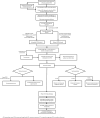Advances in the management of intraocular foreign bodies
- PMID: 39285858
- PMCID: PMC11402607
- DOI: 10.3389/fopht.2024.1422466
Advances in the management of intraocular foreign bodies
Abstract
Intraocular foreign bodies (IOFBs) remain a severe complication of ocular trauma commonly encountered worldwide. This literature review aimed to discuss current practice patterns, areas of controversy, and advances in the management of IOFBs. Injuries involving IOFBs carry significant ocular morbidity and management can be extremely challenging. A systematic approach to preoperative evaluation and IOFB surgical management is detailed in this article and should be applied in each case. The location and composition of an IOFB have important implications on surgical approach and timing, especially in cases of toxic metals and vegetable matter. The advantages, disadvantages, and previous literature regarding immediate versus delayed foreign body removal are presented. Surgical approaches are described, with an emphasis on posterior chamber IOFB management and removal via pars plana vitrectomy. Final visual acuity is variable, but approaches have been used to prognosticate outcomes including the Ocular Trauma Score. By synthesizing current IOFB literature, the goal is to provide practitioners with guidance that will maximize the chances of surgical success and patient outcomes.
Keywords: endophthalmitis; intraocular foreign body; ocular trauma; open globe injury; vitrectomy.
Copyright © 2024 Ohlhausen, Menke, Begley, Kim, Debiec, Conrady, Yeh and Justin.
Conflict of interest statement
The authors declare that the research was conducted in the absence of any commercial or financial relationships that could be construed as a potential conflict of interest.
Figures


References
-
- Martín-Prieto S, Álvarez-Peregrina C, Thuissard-Vassallo I, Catalina-Romero C, Calvo-Bonacho E, Villa-Collar C, et al. . Eye injuries epidemiology description in a working population over 10 years in Spain. Int J Environ Res Public Health. (2020) 17:4454. doi: 10.3390/ijerph17124454 - DOI - PMC - PubMed
Publication types
LinkOut - more resources
Full Text Sources
Miscellaneous

